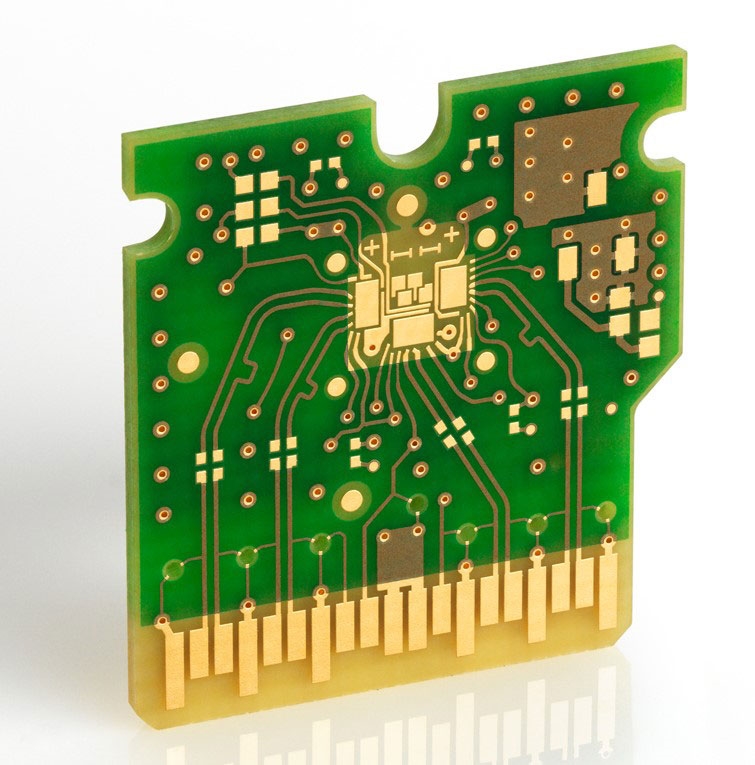If you're looking to design printed circuit boards (PCBs) for parking systems, you're likely wondering how to balance compact PCB design for parking with parking PCB reliability in automotive applications. The secret lies in mastering space optimization, thermal management, and strategic component placement. In this blog, we'll dive deep into proven techniques to help you create efficient, reliable PCBs for parking systems, ensuring they withstand the harsh automotive environment while fitting into tight spaces.
Parking systems in vehicles, such as sensors, cameras, and control units, rely heavily on well-designed PCBs to function seamlessly. Whether you're working on ultrasonic parking sensors or advanced driver-assistance systems (ADAS), the challenges of limited space and demanding reliability standards are ever-present. Let's explore the design secrets that can elevate your PCB layouts, focusing on PCB space optimization techniques, thermal management for parking PCBs, and component placement for dense PCBs.
Why Parking System PCBs Demand Special Attention
Parking systems are critical for modern vehicles, enhancing safety and convenience. These systems often operate in tough conditions—think extreme temperatures, vibrations, and moisture. A poorly designed PCB can lead to system failures, compromising safety. That’s why parking PCB reliability in automotive applications is non-negotiable. At the same time, automotive designs prioritize compactness to save space and reduce weight, making compact PCB design for parking a top priority.
The goal is to create a PCB that fits into a small enclosure while handling power demands, minimizing signal interference, and dissipating heat effectively. Achieving this balance requires a deep understanding of design principles tailored to automotive needs. Let's break down the key strategies to optimize your parking system PCBs.
Key Challenges in Parking System PCB Design
Before diving into solutions, it’s important to understand the unique hurdles in designing PCBs for parking systems:
- Space Constraints: Automotive systems often have limited room for electronics, requiring highly compact designs.
- Environmental Stress: PCBs must endure temperature swings (often from -40°C to 85°C), vibrations, and humidity.
- Power and Signal Integrity: Parking systems handle a mix of low-power sensors and high-power actuators, which can lead to interference if not managed properly.
- Heat Generation: Dense layouts and high-power components can create hotspots, risking component failure.
With these challenges in mind, let’s explore actionable design secrets to address them effectively.
Secret 1: Mastering PCB Space Optimization Techniques
One of the biggest hurdles in parking system design is fitting complex circuitry into a tiny footprint. Here are some proven PCB space optimization techniques to achieve a compact PCB design for parking applications:
Use Multi-Layer Boards
Single-layer or double-layer PCBs might not suffice for dense parking system designs. Switching to multi-layer boards (4, 6, or even 8 layers) allows you to stack traces and components vertically, saving horizontal space. For instance, a 4-layer board can reduce the PCB area by up to 30% compared to a 2-layer design while maintaining functionality.
Optimize Trace Width and Spacing
Minimize trace widths and spacing where possible, adhering to manufacturing limits (often 0.1mm for high-density designs). Narrow traces free up space for additional components, but ensure they can handle the required current—use online calculators to determine safe trace widths for currents above 1A.
Leverage Smaller Components
Opt for surface-mount devices (SMDs) over through-hole components. SMDs, such as 0402 or 0201 resistors and capacitors, are significantly smaller and allow for tighter layouts. This is especially useful in parking sensor control units where every millimeter counts.
Secret 2: Ensuring Parking PCB Reliability in Automotive Applications
Reliability is the backbone of any automotive PCB. A failure in a parking system can lead to inaccurate sensor readings or complete system downtime. Here’s how to boost parking PCB reliability in automotive environments:
Choose Durable Materials
Select PCB substrates like FR-4 with high glass transition temperatures (Tg of 150°C or above) to withstand automotive temperature extremes. For added protection against moisture and corrosion, consider conformal coatings or potting compounds to shield the board.
Design for Vibration Resistance
Automotive environments are prone to vibrations, which can loosen components or crack solder joints. Secure larger components with adhesives, and place critical parts away from board edges where vibrations are most intense. Additionally, keep trace lengths short to minimize stress points.
Implement Redundancy
For critical systems like parking sensors, design redundancy into your PCB. Duplicate key signal paths or use backup components to ensure functionality even if one part fails. This approach can increase board size slightly but is worth it for safety-critical applications.
Secret 3: Thermal Management for Parking PCBs
Heat is a major enemy of PCB reliability, especially in dense automotive designs where components are packed tightly. Effective thermal management for parking PCBs can prevent overheating and extend system lifespan. Here’s how to tackle it:
Add Thermal Vias
Thermal vias are small holes filled with conductive material that transfer heat from hot components to a heat sink or copper plane. Place multiple vias (e.g., a grid of 0.3mm vias spaced 1mm apart) under high-power components like voltage regulators or power transistors often found in parking system controllers.
Use Copper Planes for Heat Dissipation
Dedicate entire layers or large areas of your PCB to copper planes connected to ground or power. These planes act as heat spreaders, dissipating thermal energy across the board. For example, a 2oz copper layer can handle significantly more heat than a standard 1oz layer, reducing hotspot temperatures by up to 10°C.
Position Heat-Generating Components Strategically
Place high-heat components like power ICs near the edges of the PCB or close to heat sinks for better dissipation. Avoid clustering heat sources together, as this can create localized hotspots that exceed safe operating temperatures (often above 125°C for many ICs).
Secret 4: Component Placement for Dense PCBs
Strategic component placement for dense PCBs is crucial for both space efficiency and performance in parking systems. Poor placement can lead to signal interference, increased noise, or manufacturing issues. Follow these tips for optimal layouts:
Group Components by Function
Place components with related functions—such as analog and digital circuits—close together to minimize trace lengths and reduce noise. For instance, keep the microcontroller and its supporting capacitors within 5mm to avoid signal degradation, which is critical for accurate parking sensor data processing.
Prioritize High-Speed Signals
High-speed signals, like those from parking cameras, are sensitive to interference. Position these components and their traces away from power lines and noisy circuits. Maintain a clearance of at least 3x the trace width between high-speed lines and other signals to keep impedance consistent (typically 50 ohms for most high-speed designs).
Plan for Assembly and Testing
Leave enough space around components for automated assembly tools and test probes. A minimum clearance of 0.5mm between components ensures pick-and-place machines can operate without errors, while test points should have at least 1mm of accessible space for probes.
Secret 5: Signal Integrity and EMI Mitigation
In parking systems, maintaining signal integrity is vital for accurate sensor readings and communication. Electromagnetic interference (EMI) can disrupt signals, leading to false positives or system errors. Here’s how to address these issues:
Implement Proper Grounding
Use a solid ground plane to provide a low-impedance path for return currents. Avoid splitting the ground plane unless absolutely necessary, as this can create noise loops. For mixed-signal designs (common in parking systems with analog sensors and digital processors), separate analog and digital grounds, connecting them at a single point near the power supply.
Route Traces Carefully
Keep high-speed and sensitive traces as short and straight as possible to minimize inductance and crosstalk. For differential pairs, such as those used in camera data lines, ensure equal trace lengths to maintain signal timing (mismatch should be less than 0.1mm for signals above 100MHz).
Add EMI Filters
Incorporate ferrite beads and bypass capacitors near power pins of ICs to filter out high-frequency noise. A typical setup might include a 0.1μF capacitor paired with a 600mA ferrite bead for a microcontroller, reducing EMI by up to 20dB at critical frequencies.
Secret 6: Testing and Validation for Reliability
Designing a PCB is only half the battle—rigorous testing ensures it performs under real-world conditions. Here’s how to validate your parking system PCB:
Simulate Before Prototyping
Use simulation tools to analyze thermal performance, signal integrity, and power distribution before manufacturing. Simulations can predict if a component will exceed its maximum junction temperature (e.g., 150°C for many automotive-grade ICs) under load.
Conduct Environmental Testing
Test your PCB in conditions mimicking automotive environments. Subject it to thermal cycling between -40°C and 85°C, vibration tests at 5-200Hz, and humidity exposure at 85% relative humidity to confirm parking PCB reliability in automotive settings.
Perform Functional Tests
Verify that the parking system operates as intended under various scenarios. For example, ensure ultrasonic sensors detect obstacles accurately within a 0.2-4m range, even after extended stress testing.
Conclusion: Building Better Parking System PCBs
Designing PCBs for parking systems is a complex task that demands a careful balance of compact PCB design for parking and parking PCB reliability in automotive applications. By applying PCB space optimization techniques, prioritizing thermal management for parking PCBs, and mastering component placement for dense PCBs, you can create boards that perform flawlessly in the toughest conditions.
Start with multi-layer boards and smaller components to save space, choose durable materials and coatings for reliability, and use thermal vias and copper planes to manage heat. Pay close attention to component grouping and signal routing to minimize interference, and always validate your design through simulation and testing. These design secrets will help you build parking system PCBs that are both space-efficient and dependable, meeting the high standards of the automotive industry.
With these strategies in hand, you're well-equipped to tackle the challenges of parking system PCB design. Focus on precision and reliability at every step, and your designs will contribute to safer, smarter vehicles.
 ALLPCB
ALLPCB







